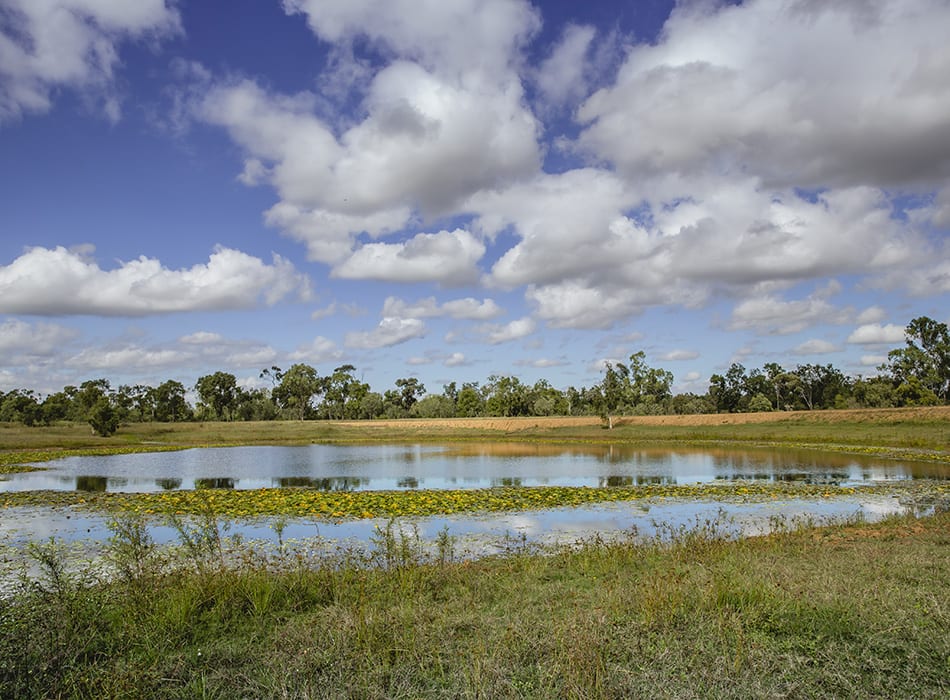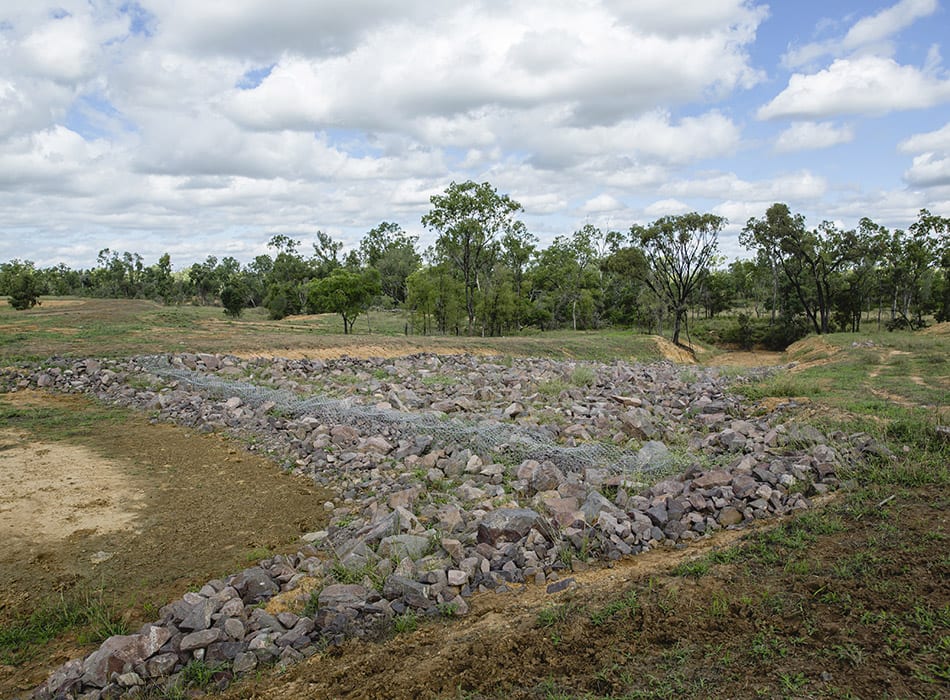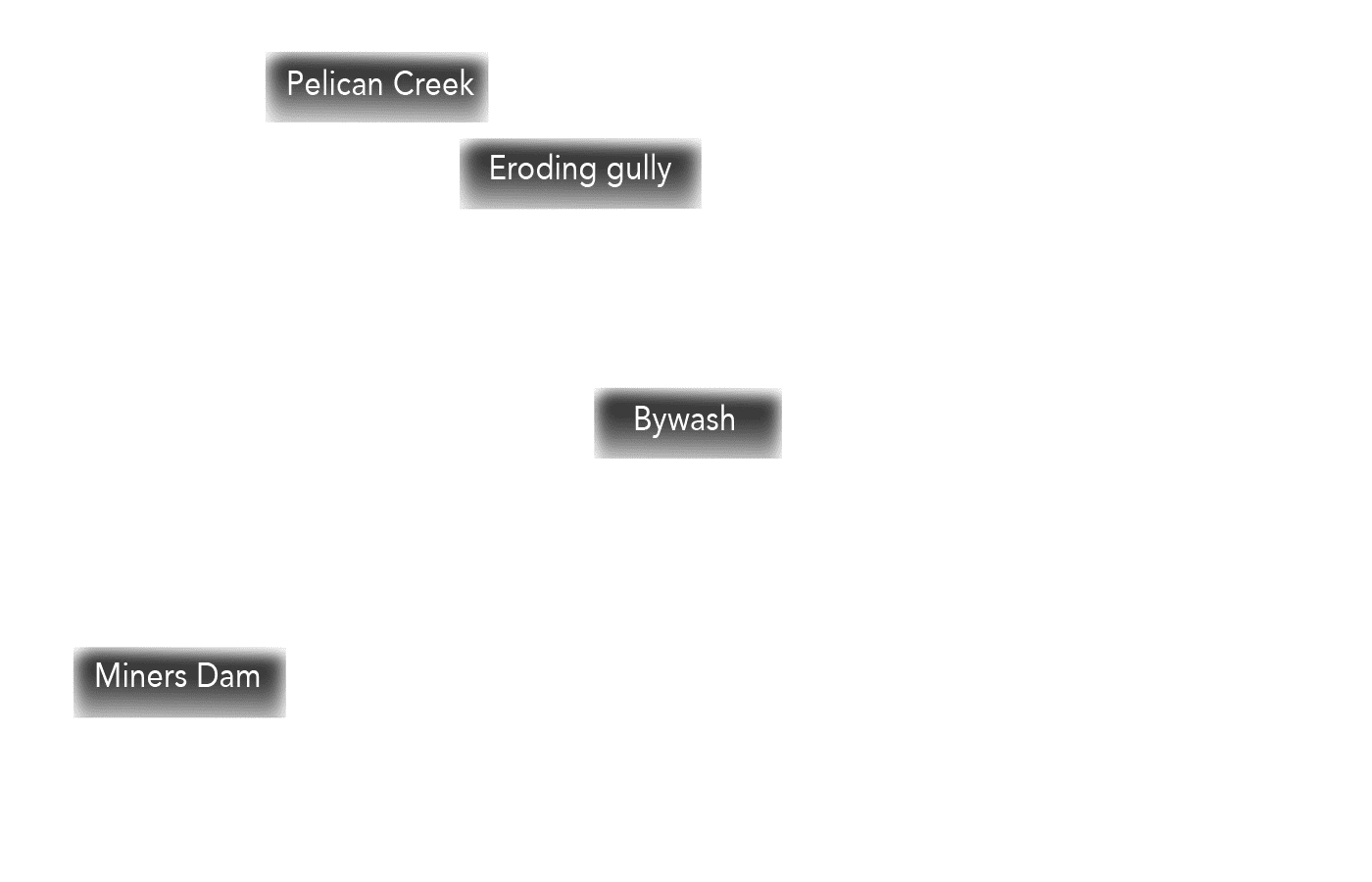
A bird’s eye view of the problem — Miners Dam, the bywash not big enough to direct the overflow during significant rain events, and the erosion caused by that fault. (Hover on the image to remove the text for a clearer view).
Project focuses on erosion hotspot at Miners Dam
Emohruo is a 512ha property located 8km south west of Scottville owned and managed by Stanley and Judy Fordham.
Emohruo covers a range of land types including narrow-leaf ironbark on deeper soils, box country on Sodosols, cleared rosewood scrub and alluvial country along Pelican Creek, including a small area of irrigated pasture.
The Sodosols are fragile and highly prone to erosion problems.
Erosion repair works were undertaken at one of the property’s major water sources, Miners Dam.
This involved widening the dam’s by-wash with reshaped batters and the construction of a rock chute to reduce the speed of the water leaving the dam.
Soil removed for these works was used to level the south east dam wall.
A erosion control structure was constructed adjacent to the dam to manage surface water, to keep it on-property.
The remediation works has been complemented by improvements in grazing land management.
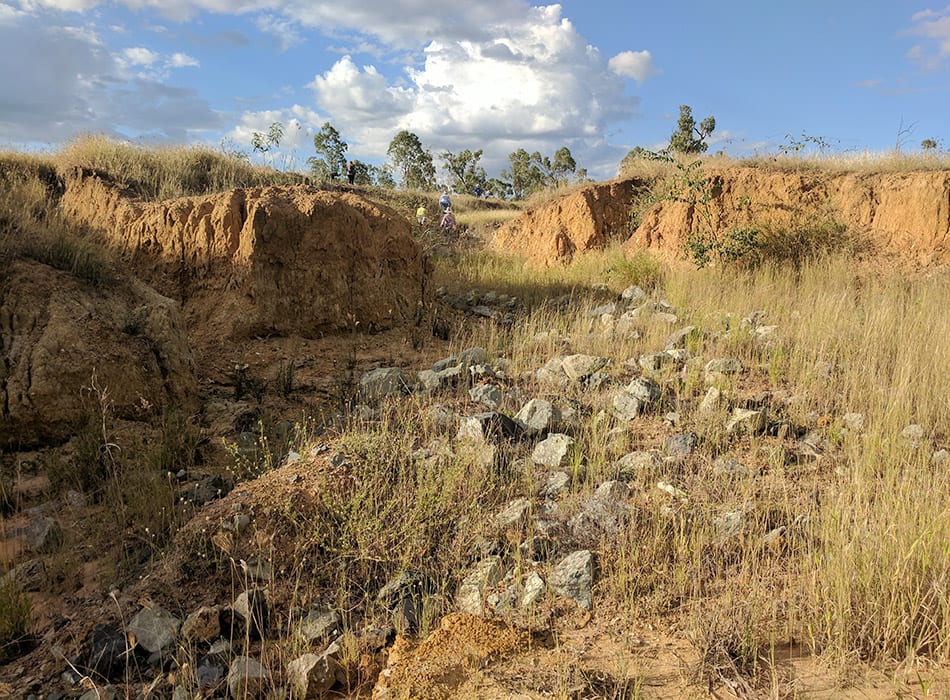
The gully before remediation work began.
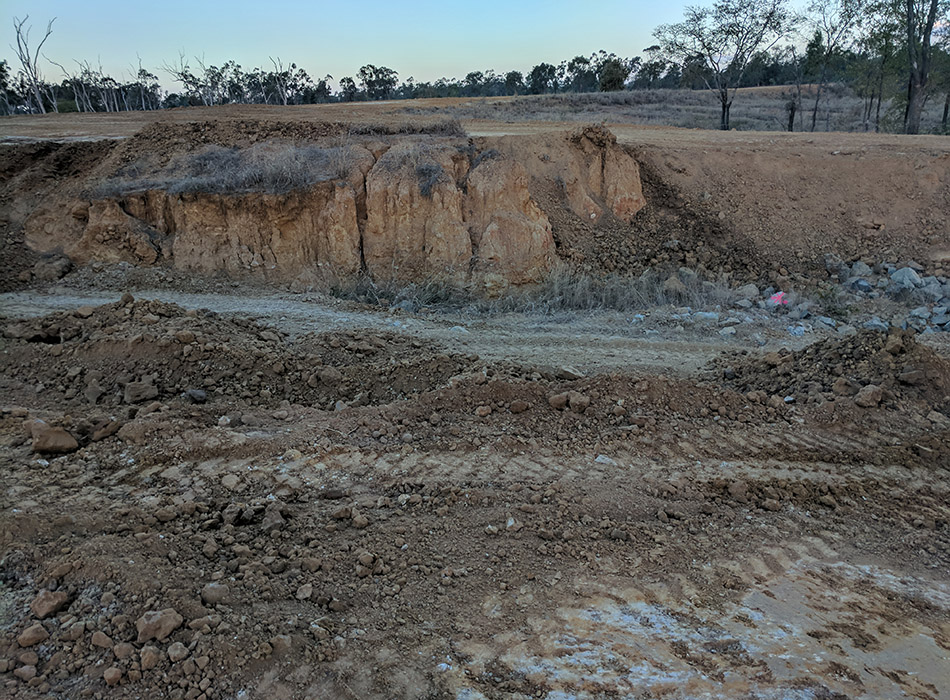
Work in the gully begins.
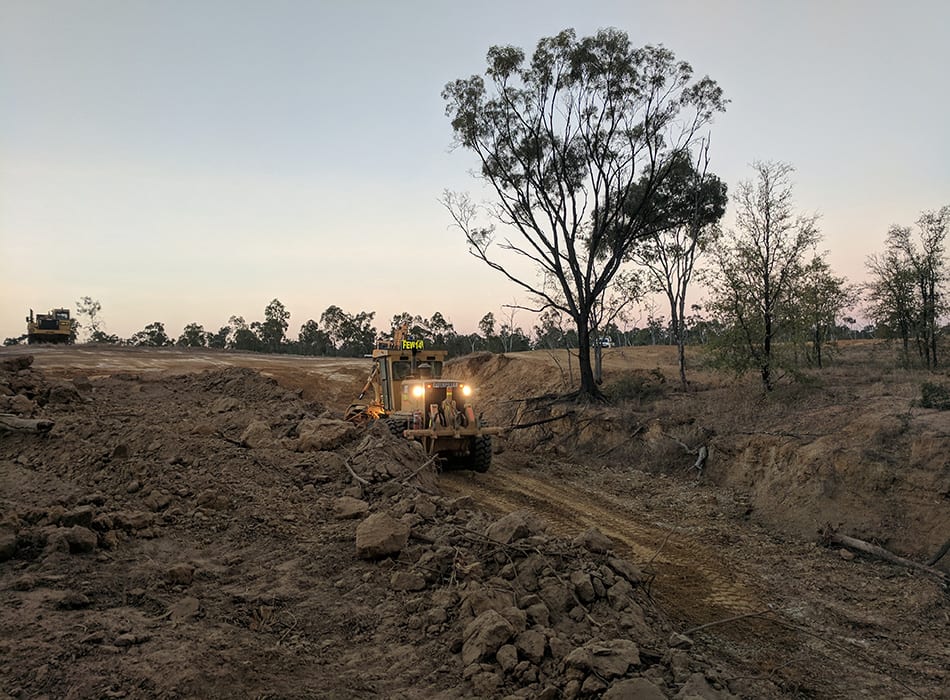
The business of reshaping and moving earth in full swing.
What was the problem?
The by-wash of Miners Dam had eroded because it had insufficient width to handle the volume of water runoff that was generated by the 71ha catchment of the dam.
It was proposed to widen along the length of the by-wash to at least 8m to mitigate the erosion risk. The by-wash was reshaped with 3:1 batters and widened to 18m at the start (3 per cent gradient) and 8m wide further downslope near the end of the 110m structure (7 per cent gradient fall).
Excavated subsoil, about 3500 cubic metres, was used to fill in erosion holes nearby as well as being spread over the dam wall. Topsoil from the excavation area was stockpiled and re-spread over the by-wash and nearby filled in areas.
Rock chutes were installed to prevent existing eroding gullies progressing up the by-wash. This included the use of a geofabric liner.
The landholders chose to supervise the project directly and use their own machinery.
They employed experienced local earthworks provider Bernie Fordham of Fordham Earthworks NQ. Bernie and Stanley had major input into the project design.
Due to budget constraints, gypsum was only able to be used on a small section of the site. Glencore provided significant in-kind support through the provision of large rock for the rock chute and project advice.
Earthworks took five days and involved an excavator, scraper and grader.
A grade bank was constructed and contour ripping completed upslope on the north west side of the by-wash to help manage surface water flow to promote paddock pasture establishment.
The landholders spread two tonne of gypsum, some pasture seed (Secca Stylo Wynn Cassia, Marc Desmanthus, Siratro, Japanese Millett, Sorghum, Buffell Grass) and topsoil on the site to complete the site works.
Stock will be re-introduced to this site when ground cover levels and structure stability has been achieved.
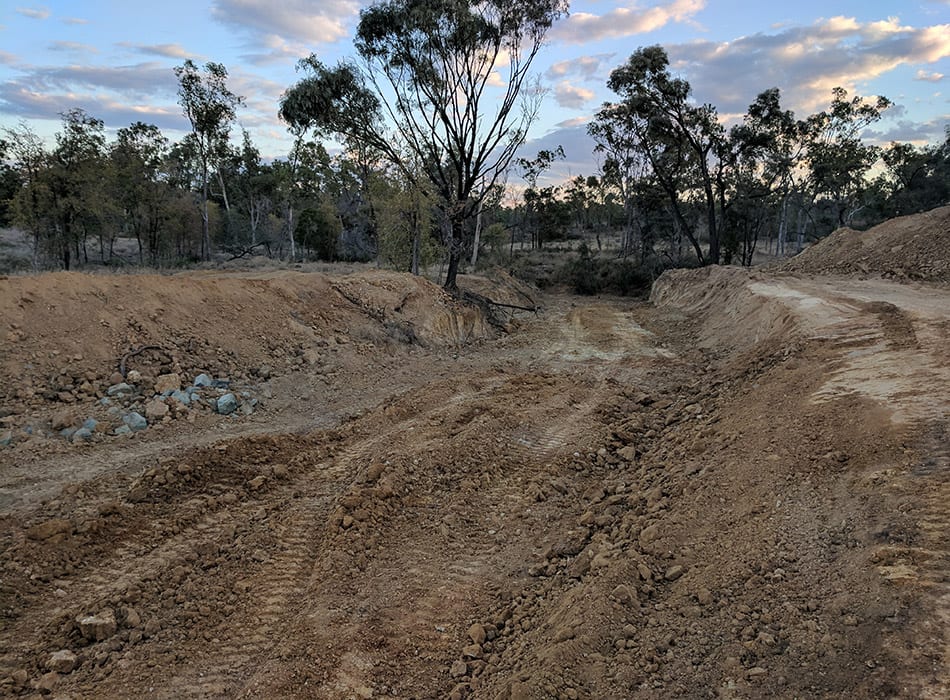
This photograph shows the length of the gully looking towards Pelican Creek.
Landholder objectives of the project were to:
- Grade the existing access track from the property boundary to the dam to allow large machinery to access the site.
- Remediate the eroded by-wash of Miners Dam to the east of the house by widening and improving the structure.
- Control gullies in the by-wash by the installation of a rock chute.
- Enhance the dam wall by making the top of the embankment a uniform level.
- Use remaining subsoil to fill-in nearby eroded areas in combination with lime application to reduce soil acidity.
- Stockpile excavated topsoil and re-spread over the by-wash and other nearby remediation areas.
- Sow the by-wash with a stoloniferous (creeping) grass to provide stability.
- Contour ripping upslope on the north-west side of the by-wash to reduce additional erosion damage from overland flow and increase pasture establishment.
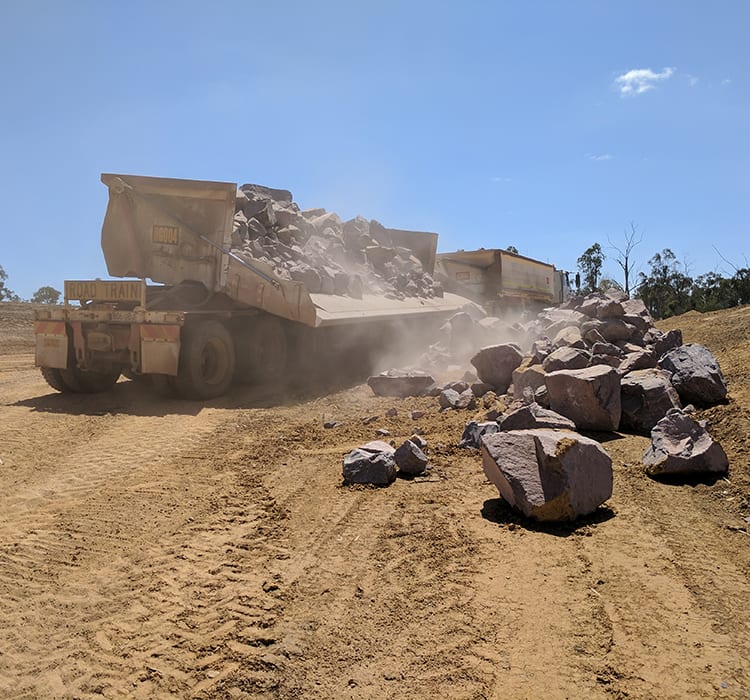
Rock contributed by Glencore being delivered.
What were the challenges?
- This was a major machinery project with multiple machines used on the same day (scrapper, grader, excavator, loader). A couple of equipment breakdowns did occur.
- Stanley’s ability to use an excavator and loader helped ensure the job could be done under budget.
- The hardness of the subsoil meant the task took longer than first thought.
- In order to facilitate access to the site by machinery an existing track leading directly from the main road to the dam was improved.
- Finding topsoil to reseed and cover the site.
- Placing rock on the geofabric without tearing it or diverting water off the fabric.
- Physical nature of the work.
- Digging the long trench for the gabion baskets – accuracy and stopping side wall slumping.
- Laying the rock on the side walls of the by-wash.
- Ensuring works came under budget.
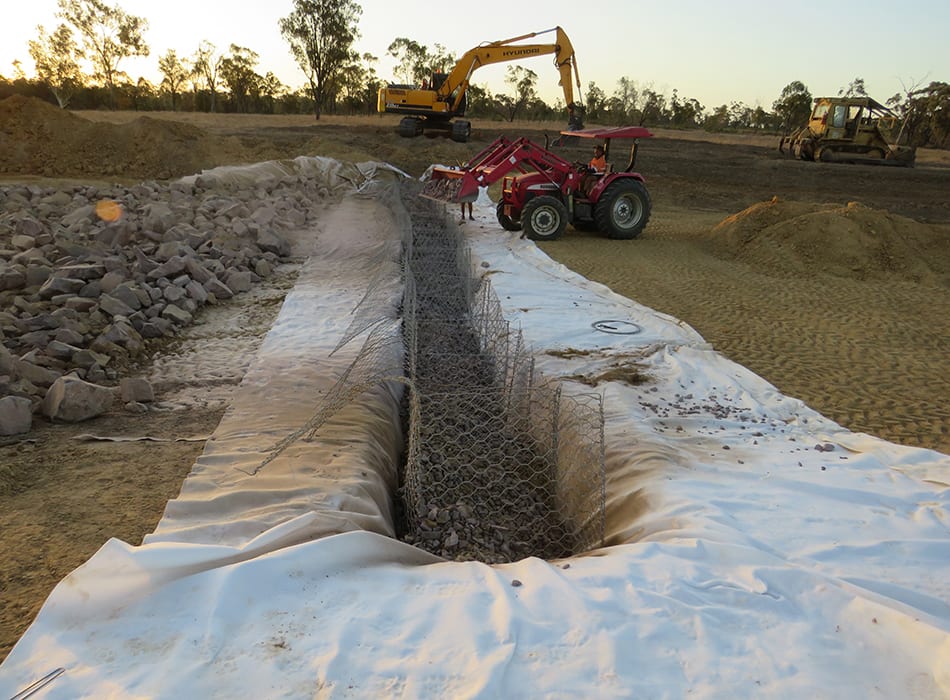
Installing gabion baskets.
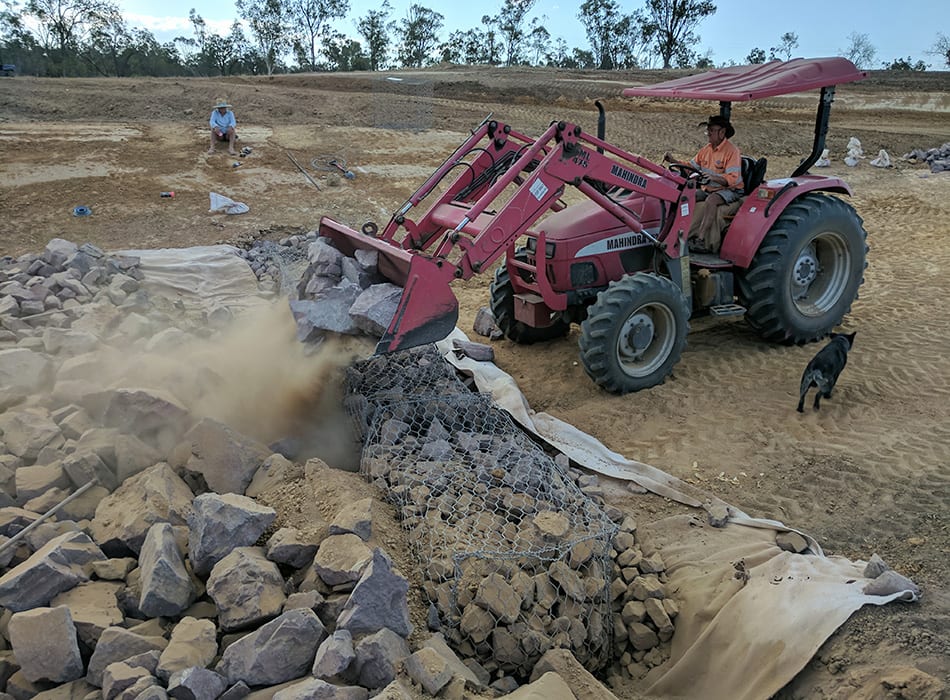
Filling the baskets.
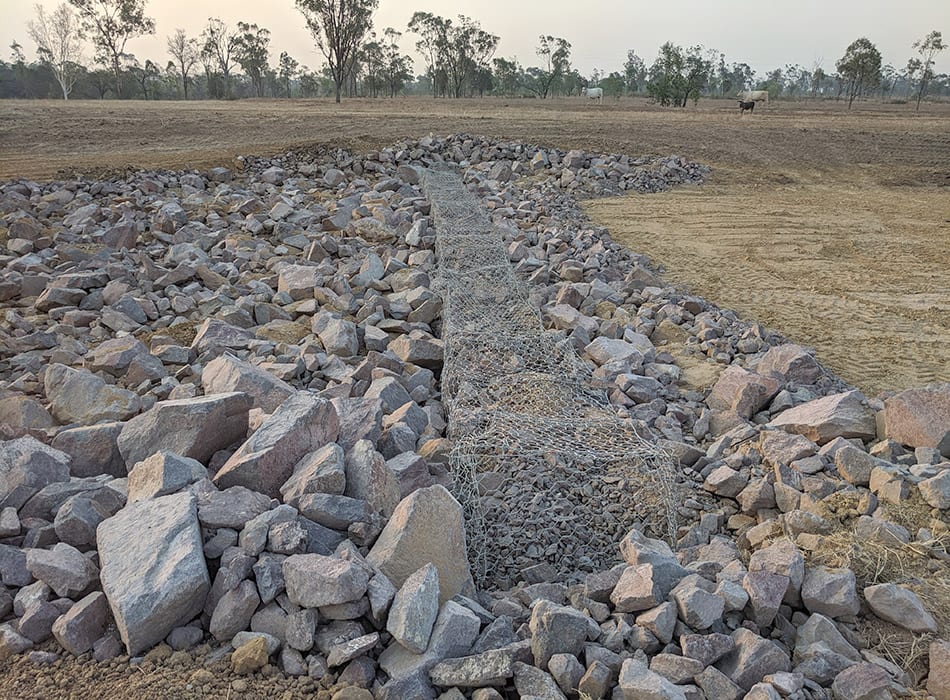
Gabion baskets filled and tied in.
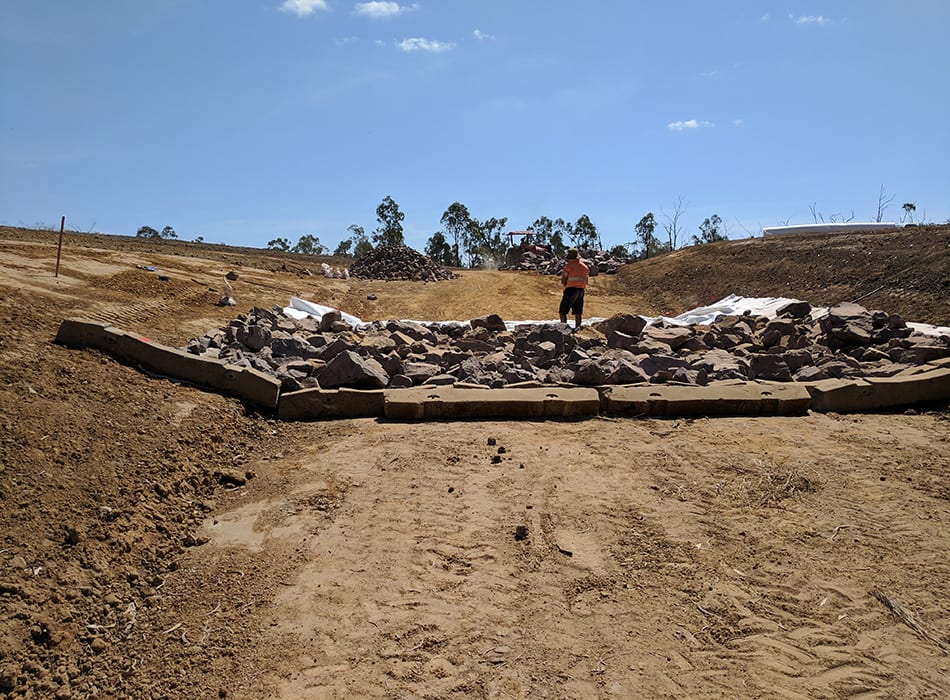
Gabion baskets buried under more rock fill.

The view from the top of the gully towards the creek.
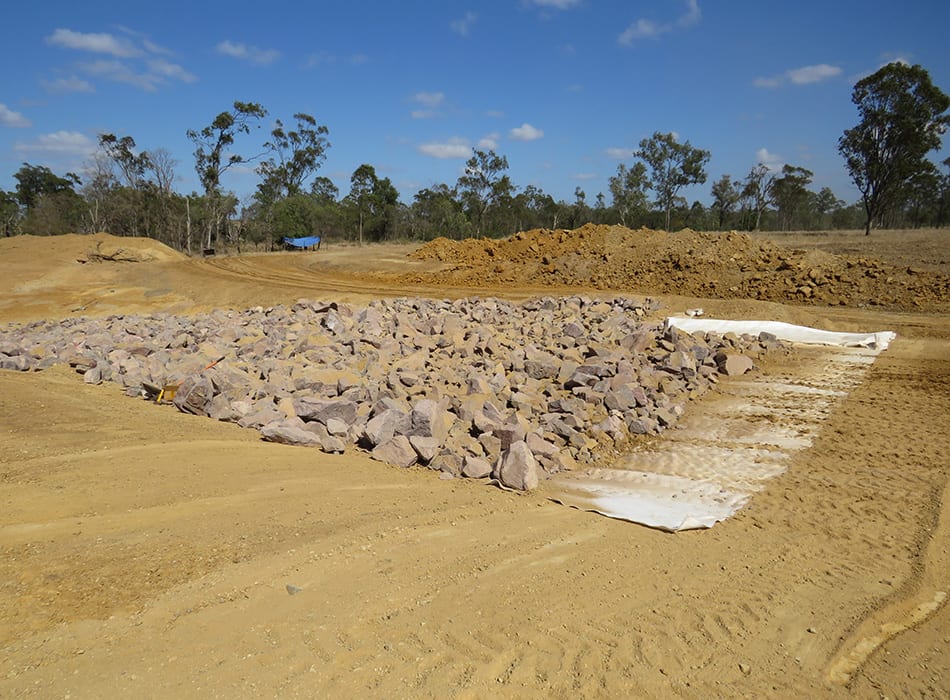
View from the middle section of the gully looking towards the creek.
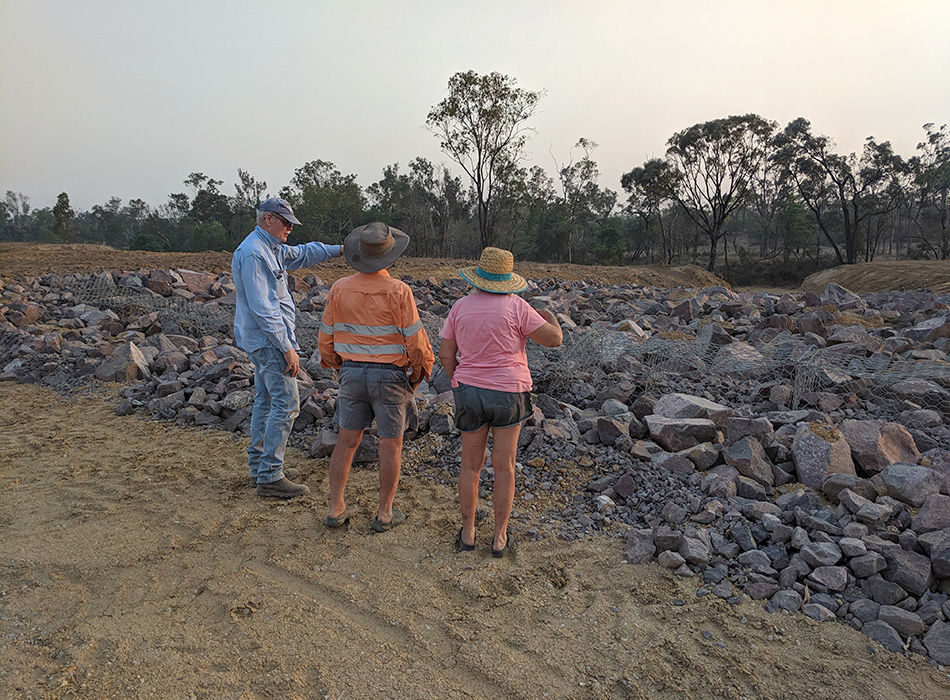
Bob Shepherd (left) with graziers Stan and Judy Fordham inspecting works.
After the works, the photograph looking towards Pelican Creek with the dam on the left shows the bywash has been widened and the gully remediated.
Completed works, including the raised bank in the background, retains the integrity of the dam.

